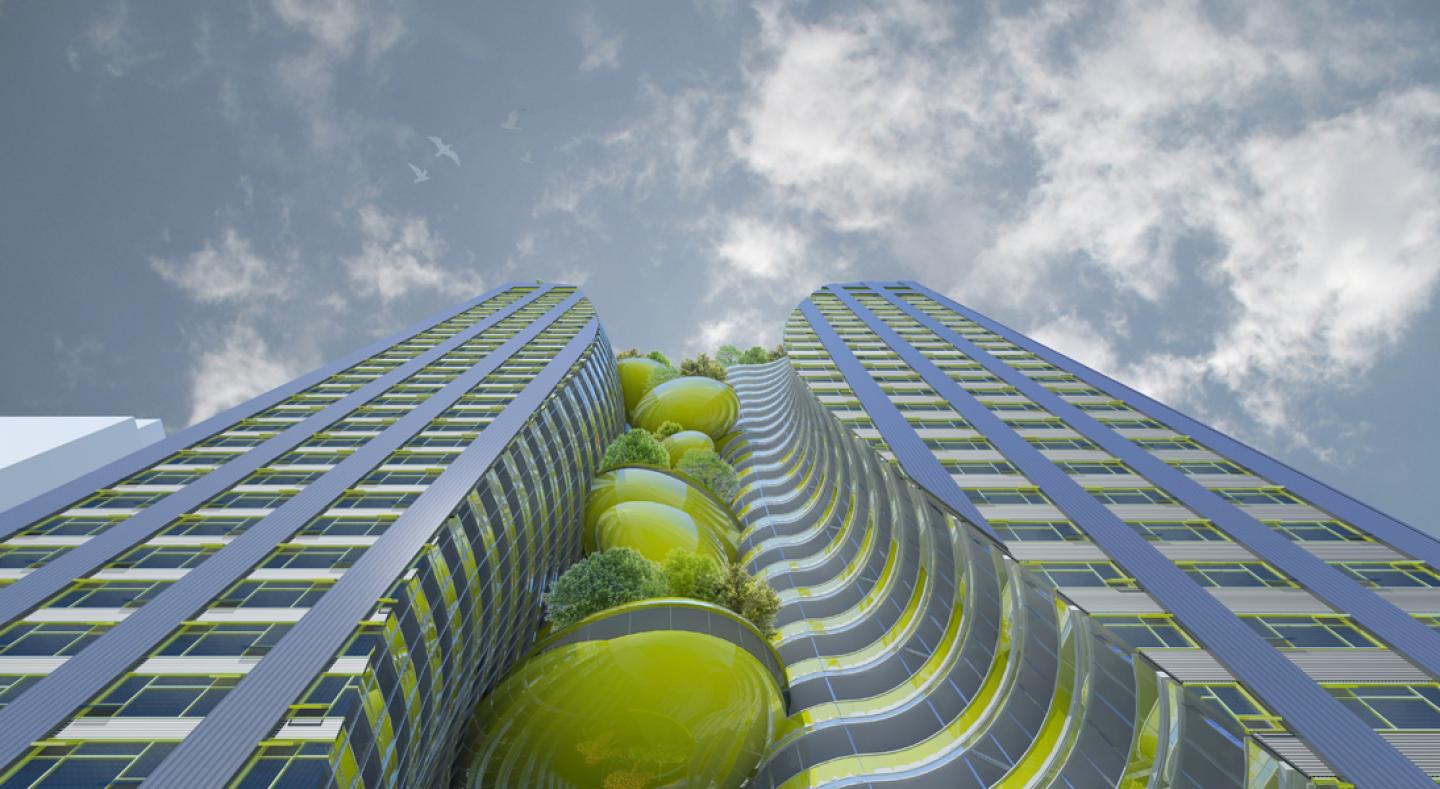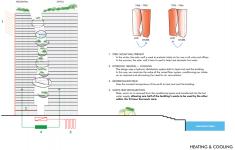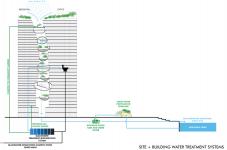Typically, residential and office zones are built in isolation, creating segregated urban areas. This results in floors and buildings remaining empty for large timespans, and amenities being doubled - one created for each zone. Middle Ground reconfigures this model into a novel collision between an office and residential building, with shared uses, amenities, and systems. This creates an alert, lively, mixed use building activated 24/7 – by residents in the evening and employees during the day.
In response to the event-less, invisible city within a condo village, the design attempts to provide socially engaging, dynamic environments within a tower typology by bending the street into the sky. Social pods between the two towers creates a sense of community within a larger volume, allowing tenants to live, work and play within the same building
A perforated steel Solar Wall uses free energy from the sun to heat outdoor air without the use of fossil fuels, providing 100% fresh supply air to the entire building during winter, and heat for domestic hot water during the summer. Stale exhaust air is removed from the space into the buildings core, where its heat is released into an appropriate medium for heating the spaces and/or their domestic hot water, depending on the season. This creates a synergy between the two residential and office towers not commonly seen in contemporary architecture; one halfs waste becomes the others treasure
Central recreational zones create access to greenspace high above the street; residents and employees have direct access to fresh air, improving the buildings indoor quality. Middle Ground accommodates the changing needs of todays families and professionals. Unit types range from large 3-bedroom condos to affordable studio units, while accommodating live-work scenarios. Open circulation pattern only possible with steel, as well as a raised floor system that both facilitates easy changes in occupancy layouts as well as the efficient delivery of conditioned, fresh air to occupied spaces
2013
2014
SUSTAINABILITY
Sustainable advantages of steel both as structure and as a critical component of the building enclosure. Structurally, the ability to bear building loads with a much smaller quantity of materials demonstrates its clear superiority over concrete. The organization of the spaces allows for a shared systems design, where waste heat from the office half’s day is used by residents in the evening and night. This results in a highly efficient building typology in terms of both social and environmental factors. The proposal maximizes its solar exposure, using the suns thermal energy to heat outdoor supply air and/or domestic hot water. Wastewater treatment on site, including rain water, urban runoff, and providing bio-remediation to the adjacent Newtown Creek. This turns the building into a productive landscape
Sustainable.TO Architecture + Building
(www.sustainable.to)










